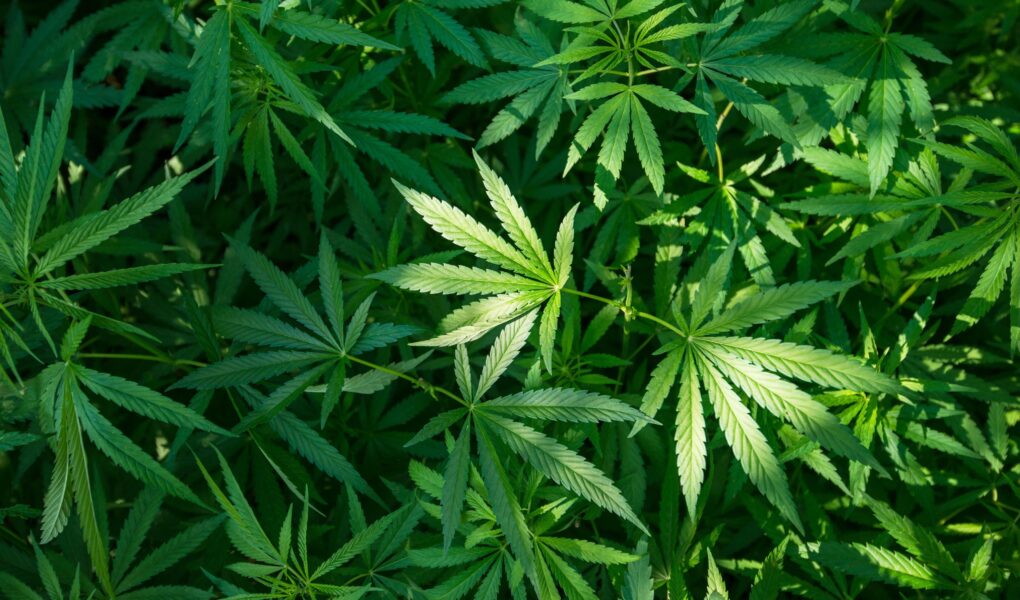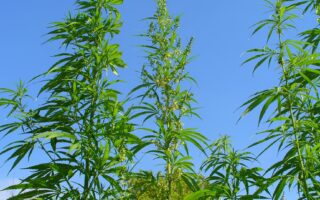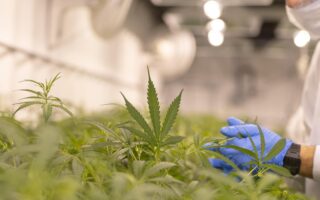Is Marijuana? An Exploration of Nature’s Green Enigma
In the vast tapestry of the natural world, few plants have ignited as much debate and fascination as marijuana. From ancient spiritual rituals to modern medicinal applications, this versatile herb straddles the realms of legality, culture, and science, generating a narrative that is rich, complex, and often polarizing. As we peel back the layers surrounding marijuana, we invite you to journey with us through its historical significance, biological characteristics, and evolving societal perceptions. What is marijuana, truly? Is it merely a recreational substance, a therapeutic ally, or a potential catalyst for change? Join us as we delve into the heart of this green enigma, seeking clarity amidst the smoke and shadows.
Table of Contents
- Understanding the Nature of Marijuana and Its Components
- Legal Status and Societal Perceptions of Marijuana Today
- Health Implications and Benefits: Separating Fact from Fiction
- Navigating Responsible Use: Guidelines and Best Practices
- Q&A
- Wrapping Up
Understanding the Nature of Marijuana and Its Components
Marijuana, scientifically known as Cannabis sativa, is a multifaceted plant belonging to the Cannabaceae family. It has cultivated a rich historical and cultural significance across the globe, serving various purposes from medicinal to recreational. The plant is renowned for producing a range of active compounds, primarily cannabinoids, which interact with the body’s endocannabinoid system. These compounds can elicit various physiological effects, such as pain relief, appetite stimulation, and mood modulation. The primary cannabinoids include:
- THC (Tetrahydrocannabinol) - The psychoactive component responsible for the “high.”
- CBD (Cannabidiol) – Non-psychoactive and known for its therapeutic properties.
- CBG (Cannabigerol) - Considered the ”parent” cannabinoid, showcasing potential health benefits.
Beyond cannabinoids, marijuana also contains other crucial components that contribute to its effects and nuances, including terpenes and flavonoids. These compounds not only impart unique aromas and flavors but may also modulate the effects of cannabinoids in what is known as the entourage effect. Understanding the diverse chemical makeup of marijuana is pivotal for unlocking its therapeutic potential and enhancing user experiences. The nuances of how these components interact can be summarized in the table below:
| Component | Role | Benefits |
|---|---|---|
| THC | Psychoactive | Pain relief, euphoria |
| CBD | Non-psychoactive | Anti-inflammatory, anxiety relief |
| Terpenes | Aromatic compounds | Flavor enhancement, potential therapeutic benefits |
Legal Status and Societal Perceptions of Marijuana Today
The legal landscape for marijuana has experienced significant shifts in recent years, with numerous countries and states reevaluating their stance on this once-taboo substance. As of now, many areas have adopted varying degrees of legalization, leading to a complex patchwork of laws. In a growing number of jurisdictions, individuals can possess, use, and even cultivate marijuana for personal use, while others maintain strict penalties. This evolving legal context has contributed to a broader acceptance of marijuana, particularly as research has illuminated its therapeutic potential and effects.
Societal perceptions of marijuana have transformed dramatically, shifting from stigma to a more nuanced understanding characterized by both support and skepticism. Public opinion polls consistently show that a significant portion of the population favors legalization, recognizing benefits that include economic opportunities and criminal justice reform. Yet, lingering concerns about health risks and the substance’s potential for misuse persist. Key points influencing these perceptions include:
- Medical Benefits: Efficacy in managing pain, anxiety, and other conditions.
- Economic Impact: Job creation in emerging markets and tax revenue for governments.
- Cultural Changes: Evolving dialogues around usage and acceptance in social settings.
| Aspect | Current Status |
|---|---|
| Legalization | Varies by region; increasing legality in several areas |
| Public Support | Growing acceptance; majority support in many polls |
| Research | Increased studies on medical benefits |
Health Implications and Benefits: Separating Fact from Fiction
The conversation surrounding marijuana is often clouded by misconceptions and a lack of clarity on its actual health implications and benefits. Cannabinoids, the active compounds in marijuana, interact with the body’s endocannabinoid system, potentially offering various therapeutic effects. Some of the most widely recognized benefits include:
- Pain relief: Particularly in conditions like arthritis and chronic pain syndromes.
- Reduced anxiety: Certain strains may help to alleviate anxiety and promote relaxation.
- Appetite stimulation: Beneficial for patients undergoing treatments such as chemotherapy.
- Neurological benefits: Emerging studies suggest potential in managing epilepsy and neurodegenerative diseases.
However, while some studies highlight these benefits, it is crucial to acknowledge potential drawbacks associated with its use. Short-term effects can include impaired cognitive function and increased heart rate, while long-term use may lead to dependency or exacerbation of mental health issues in susceptible individuals. The following table summarizes some of the key health implications:
| Potential Benefits | Possible Risks |
|---|---|
| Chronic pain management | Short-term memory impairment |
| Anti-inflammatory properties | Increased heart rate |
| Improved sleep quality | Risk of addiction |
| Support in mental health conditions | Potential for anxiety in some individuals |
Navigating Responsible Use: Guidelines and Best Practices
Understanding the responsible use of marijuana is essential for both new users and seasoned individuals alike. First and foremost, it’s crucial to recognize the legal status of marijuana in your area. Compliance with local laws is non-negotiable; consumers must stay informed about regulations regarding age, possession limits, and usage locations. Additionally, users should consider their personal health, including any medical conditions or medications that may interact negatively with cannabis. Here are some key points to keep in mind:
- Know your limits: Start with low doses to gauge your body’s reaction.
- Choose quality over quantity: Opt for reputable sources and products.
- Be aware of the setting: Ensure a safe and comfortable environment for use.
Another important aspect of responsible use is understanding the different methods of consumption available today. Each method brings its own effects, onset times, and duration. Here is a brief overview of popular consumption methods:
| Method | Onset Time | Duration |
|---|---|---|
| Smoking | Immediate | 1-3 hours |
| Vaping | Immediate | 1-3 hours |
| Edibles | 30-90 minutes | 4-8 hours |
| Tinctures | 15-45 minutes | 2-6 hours |
By being informed about the various methods and their effects, users can make better choices tailored to their preferences and needs. Always approach consumption with a sense of mindfulness, ensuring that your experience remains safe and enjoyable.
Q&A
Q&A: Understanding Marijuana
Q: What exactly is marijuana?
A: Marijuana, also known as cannabis, is a plant that belongs to the Cannabaceae family. It is renowned for its psychoactive properties, primarily attributed to compounds called cannabinoids, the most prominent of which is tetrahydrocannabinol (THC). Marijuana is used for various purposes, ranging from recreational enjoyment to medicinal treatments.
Q: How is marijuana consumed?
A: There are several ways to consume marijuana. Traditional methods include smoking it in joints or pipes, while more contemporary practices involve vaporizing it or using cannabis-infused edibles like brownies and gummies. Additionally, oils and tinctures have become popular choices for those seeking alternative forms of consumption.
Q: What effects does marijuana have on the body?
A: The effects of marijuana can vary widely depending on the individual, the strain, and the method of consumption. Commonly reported effects include relaxation, altered perception of time, increased appetite, and euphoria. However, it can also lead to anxiety or paranoia in some users, particularly at higher doses.
Q: Is marijuana legal everywhere?
A: No, marijuana legality varies significantly across the globe. Some countries have embraced full legalization for both recreational and medicinal use, while others maintain strict prohibitions. In the United States, for example, marijuana is legal in some states for recreational use, in others for medical purposes, and is still prohibited at the federal level.
Q: What are the potential medicinal uses of marijuana?
A: Research has shown that marijuana may help alleviate various medical conditions, including chronic pain, nausea and vomiting associated with chemotherapy, and symptoms of multiple sclerosis. Cannabidiol (CBD), another cannabinoid found in marijuana, has gained attention for its potential therapeutic benefits without the psychoactive effects of THC.
Q: Are there risks associated with marijuana use?
A: Like any substance, marijuana carries potential risks. These can include impaired cognitive function, dependency issues, and adverse mental health effects, particularly for individuals predisposed to anxiety or psychosis. Long-term smoking can also have respiratory consequences. It’s essential for users to be informed and mindful of their usage.
Q: How does marijuana affect mental health?
A: The relationship between marijuana and mental health is complex. While some individuals report relief from anxiety and depression, for others, particularly younger users, it may exacerbate or trigger mental health issues. Ongoing research seeks to unpack these nuanced interactions, highlighting the importance of moderation and context.
Q: Is there a difference between marijuana and hemp?
A: Yes, there is a distinct difference. Hemp is a variety of the cannabis plant that contains very low levels of THC (usually less than 0.3%) and is primarily cultivated for industrial purposes, such as making textiles, paper, and biofuels. In contrast, marijuana is cultivated for its higher THC content and is commonly used for recreational or medicinal reasons.
Q: What does the future hold for marijuana?
A: The future of marijuana is evolving rapidly, with increasing scientific research, changing public perceptions, and shifting legal landscapes. As more studies emerge and conversations continue, marijuana may become more widely accepted, both as a recreational choice and a viable option for addressing various health issues.
Conclusion:
Marijuana is a complex and multifaceted subject, steeped in history, culture, and ongoing debate. Understanding its various dimensions — from its biological makeup to its societal implications — invites a broader conversation about health, legality, and personal choice.
Wrapping Up
As we navigate the complex landscape of marijuana, we find ourselves at the intersection of science, culture, and policy. The question of “is marijuana” transcends mere legality; it encompasses health implications, societal perceptions, and personal choices. From its use in ancient medicinal practices to its modern status as a recreational substance, marijuana evokes a spectrum of opinions and experiences.
In this evolving dialogue, understanding the nuances of marijuana—its benefits, risks, and the surrounding controversies—becomes essential. Whether you view it as a therapeutic ally, a social lubricant, or a contentious issue, what remains clear is that marijuana continues to spark curiosity, debate, and discovery.
As we look ahead, monitoring ongoing research and public sentiment will be crucial. The narrative surrounding marijuana is still being written, and each chapter invites informed discussion and exploration. Ultimately, the question “is marijuana” may not have a definitive answer, but it undoubtedly encourages us to think critically about our choices, values, and the future we wish to cultivate.



